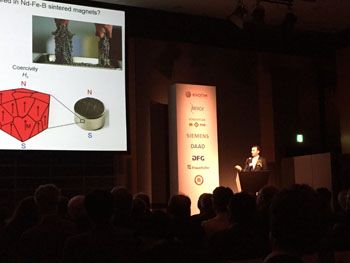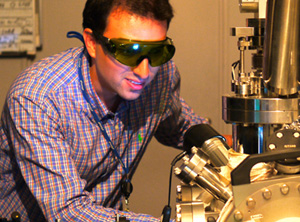
The Gottfried Wagener Prize honors young scientists in Japan for path-breaking and application-oriented research work in the areas of Mobility, Materials, Life Sciences and Energy & Industry. In each of these four research areas a prize of 2,500,000 Yen is awarded.
They won the award in the area of "Materials" for the work entitled: "Development of Dy-free high performance Nd-Fe-B permanent magnets by engineering of grain boundary phase".



